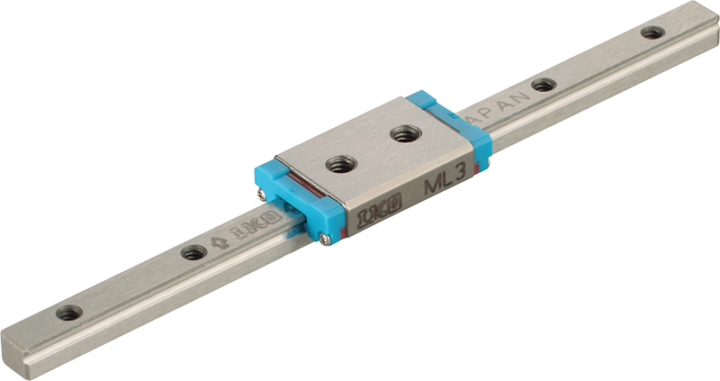Miniature bearings are often supplied “as is” with very few options available when it comes to material choices. This lack of choice probably won’t pose any problems in lightly-loaded, intermittent-use applications. But having a wide range of material choices starts to matter if you want to maximize the performance of your miniature linear bearings.
The right rail steel. For example, we offer miniature guides with either stainless steel or carbon steel rails. Stainless steel enables use in clean rooms and other demanding environments, while high carbon steel models are designed for all-purpose use. Stainless steel end plates are also available for applications experiencing thermal extremes. In addition, a special grade of nonmagnetic hard alloy is available for use in areas that are sensitive to magnetic fields such as certain medical and surgical equipment, including magnetic resonance imaging (MRI) machines.
Upgrade the balls. The balls that reside inside the carriages are available in three materials as well—stainless steel, carbon steel and ceramic. In extremely humid conditions, even stainless steel can develop rust over time, which makes ceramic balls a better choice in this scenario. Other benefits of ceramic over stainless steel include exceptional performance with higher rigidity, less deformation, improved speed and reduced noise. In applications involving high humidity, extreme
speeds or strict noise requirements, ceramic balls are a better choice than stainless versions.
Consider coatings. Specialized coatings are another option to consider. In extreme environments facing high humidity or moisture, corrosion-resistant coatings add an extra degree of protection for guide rails and housings. Coatings are
easily specified and applied at the factory prior to delivery.



